Deciding how to brew coffee can be an overwhelming prospect. Perhaps it's something that you haven't given much thought. If you've been disappointed by the taste you get from automatic systems, such as a drip or pod brewer, you may be interested to know that your coffee drinking experience has much more potential. You must, of course, find the balance between cost, effort, and taste that suits your lifestyle, but spending a bit more time on your coffee can yield impressive results. Although there are a myriad of options, this guide is a primer on some easy avenues that we recommend.
One important thing to consider is whether you're willing to buy a grinder, or just prefer to buy what's available at the grocery store. We provide coffee whole bean or ground for any preference, so there's no need to invest into something fancy when ordering directly from our store. If you take a while to get through your coffee, it's worth noting that whole beans stay fresh longer than ground coffee. You don't want to skimp on a grinder, especially if you're grinding for espresso, as most either don't grind evenly or fine enough. It may surprise you that the quality of your grinder is one of the most essential aspects of brewing excellent coffee. A cheap one can be a huge detriment to the flavor of your product. Burr grinders surpass blade ones in quality, but it doesn't guarantee excellence.
Automatic
The benefit of an automatic system is, of course, the minimal effort required. Purchasing cheap equipment can cause you to lose a lot of complex flavors. Simply upgrading to something more advanced, such as an OXO Brewer which infuses the coffee in stages, will result in a higher quality taste. This is an ideal method for those who live busy lifestyles, and to whom coffee plays a background role in your other endeavors. A key benefit here is having the ability to schedule a brew ahead of time, as well as its set-it-and-forget-it nature. There are, of course, a whole selection of automatic brewers which can be priced into the hundreds of dollars. You can also find automatic pour-over machines, which provide the benefits of both automatic and pour-over options. Grinding beans right before brewing is still always the ideal. One other downside to cheaper automatic machines is their built-in hotplate. While keeping your coffee hot is great, cooking it further is not. A vacuum decanter would be an ideal vessel, such as OXO provides with their brewers. Alternatively, you can manually cycle the hotplate on and off, to keep from distilling your coffee into a sludge.
Pour-Over
The advantages of a pour-over are immense. You will immediately notice the brighter flavors and clean, smooth texture. Even using coffee of average quality, you'll find extra elements in your cup. One significant advantage of manual methods is that the user controls the water temperature and flow, so they can be sure that all the grounds are evenly wetted, thus extracting flavor more than a cheap automatic brewer would. Pour-overs are also ideal for removing oils, which results in a smoother drink. The only downside is that you must invest some extra time and money into this method. You will need a scale, pour-over device -- we recommend Kalita, V60, or Chemex -- filters, and a kettle. Additionally, you'll need time to heat the water, then you must spend about three minutes brewing the coffee. The smoothness, complexity, and quality can't be matched, but if you prefer something easier, perhaps automatic or french press is a better option.
French Press
A French press is a great option for those who like rich, full-bodied coffee, and for those who want an experience with minimal effort. There is also less cleanup and waste produced using this method. After brewing your coffee, simply dump the grounds into the trash or compost and rinse the device. There's no paper filter to buy, so you can save money this way too. This is a method that we recommend trying before you buy it, as some will find the resulting oils to be off-putting. It's important to note that brewing with a French press requires coarse grounds in order to keep anything from getting through the mesh filter. This is ideal for those who prefer minimal waste, and, besides, a glass French press makes for a classy piece of decoration to any home.
Cold Brew
Some might think that cold coffee sounds unappealing, but on a hot day, it can be quite refreshing. With the right type of bean, you might even find it preferable to hot coffee. There are several benefits to cold-brewing coffee. For one, your dentist will yell at you less about having stained teeth. When cold-brewed you also avoid about 65% of the acidity, for which your stomach will thank you. Additionally, since cold-brewing takes many hours of exposure, you can extract the maximum amount of caffeine from your grounds. If you tend to pick automatic methods due to time or effort, cold brewing might be an even better option for you. All that's necessary is putting the grounds in a cold-brew device, (or you can use your French press!) and let them sit. Heating water isn't required, so this is ideal for many situations. Best of all, you can make cold brew coffee in just about any container, so there's no need to buy fancy equipment. Many prefer using mason jars because many people have them; plus, it looks a little chic. If you've tried this method and struggled, it may be due to the grind that you're using -- cold brewing requires a coarse grind.
Espresso
For a rich, creamy texture in a small package, espresso is the ideal. Popular in Europe, this is a great option for those looking to load up on caffeine quickly. Additionally, many favor espresso for the crema, which supplies a full, velvety mouthfeel without having to add milk. The downside to this is the cost of equipment and cleanup time, but for those who favor it, espresso is worth the work. Dark roasts are popular go-to options here, but don't let tradition dictate your choice, as any coffee can be used. Light espresso has been gaining popularity recently. This could easily be the most expensive option, but it opens the door for making lattes, frappes, and even things like tiramisu.
There are endless brewing options, each with their own benefits and drawbacks, but trying these will get you well on your way to experiencing superior coffee. Alternative brewing methods will be ideal for other needs in life, such as instant, collapsible equipment, or Aeropress for camping, but these are our top picks for brewing at home.




